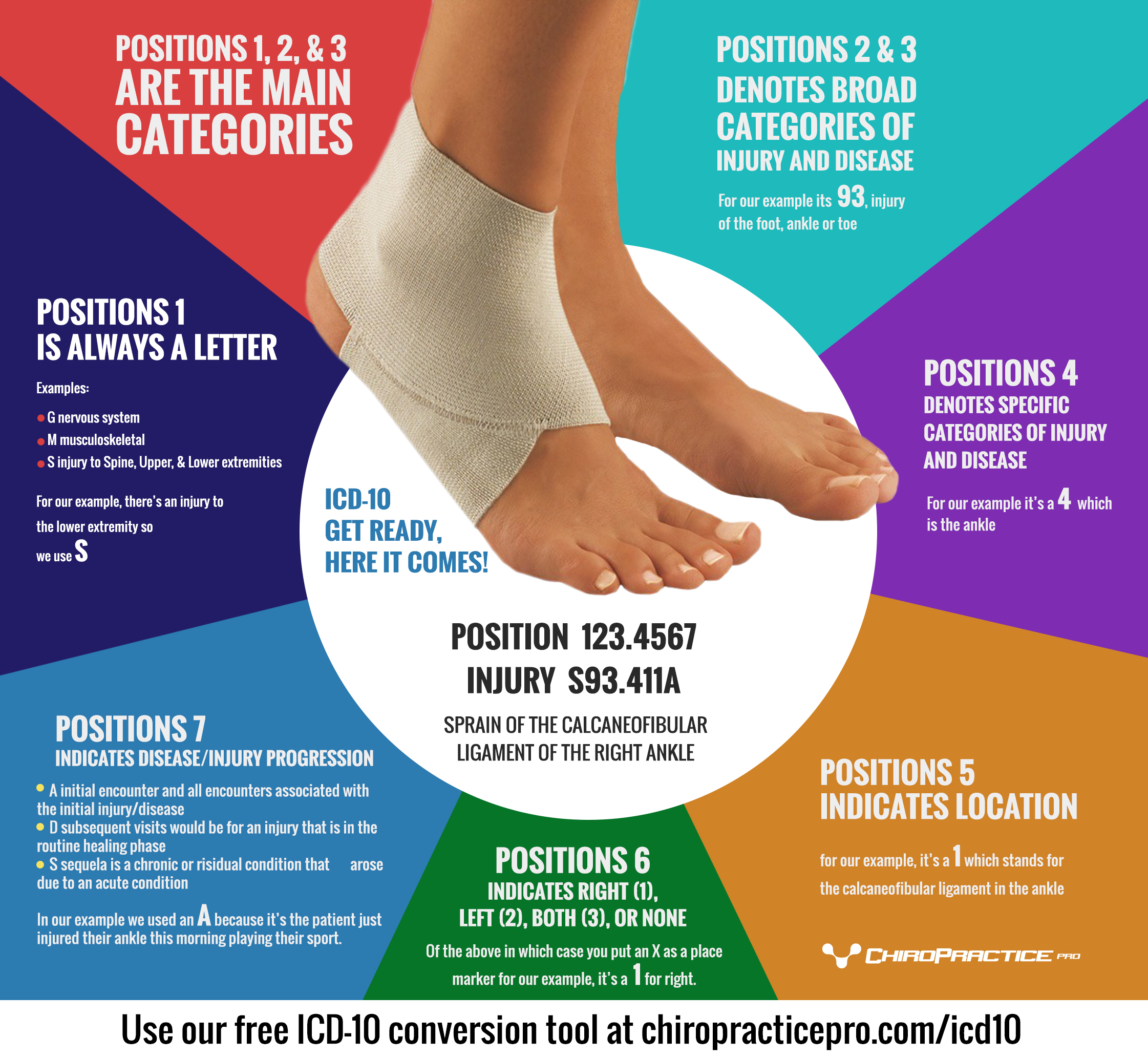Breaking Down The ICD-10 Code
 In the last post introducing our ICD 10 Code Look Up we showed you how our new ICD 9 to ICD 10 conversion tool and how ICD-10 operates inside of ChiroPractice Pro.
In the last post introducing our ICD 10 Code Look Up we showed you how our new ICD 9 to ICD 10 conversion tool and how ICD-10 operates inside of ChiroPractice Pro.
In this post we want to dig more into a little more detail of the ICD-10 diagnosis codes.
Example of An Ankle Sprain
For an example, you have a young athlete that comes in and she sprained her ankle last night during a basketball game.
After a through examination you come to the conclusion that she has a sprain of the calcaneofibular ligament of the right ankle. The ICD-10 code looks like this:
S93.411A
How the ICD-10 Code Is Set Up
The ICD 10 diagnosis codes are actually very intuitive…you just have to know how the code works.
First, ICD-10 codes can be 3, 4, 5, 6 or 7 Characters.
Generally, the longer the code the more specific the diagnosis. The codes break down like this:
Categories
- Categories are 3 characters and make up the first 3 positions
- The first character is always a Letter.
- Characters 2 and 3 are always numeric
In our example, we used an injury to the lower extremity. Injuries to the head, spine, upper and lower extremities are all classified under the letter ‘S.’ The next two positions are specify general location of the injury under the main category. For our example, 93 stands for ankle, foot, and toes.
After the categories, make sure you put a period.
Sub-Categories
- Subcategories are 4 characters and make up positions 4-7
- Characters 4, 5 and 6 can be either a letter or a number. These characters indicate the etiology, anatomical site or severity.
- Character 7 is either a letter or a number and called the extension. This character is used to indicate whether it is an initial (‘A’), subsequent encounter (‘D’) or sequela (‘S’).
- If you have a 3, 4, or 5 character diagnosis and need the 7th character you can fill the unused characters with an ‘x’.
In our example of a specific ankle injury, we use ‘4’ for ankle, ‘1’ stands for the Calcaneofibular ligament, and the ‘1’ in the 6th position stands for right. If this position was a ‘2,’ it would stand for the left side.
Finally, the ‘A’ stands for an initial visit and an A would also account for all subsequent visits dealing with the initial injury.
More Examples
Here are some examples of increasing degrees of specificity:
- M50 – Cervical Disc Disorders (This is a Category)
- M501 – Cervical disc disorder with radiculopathy (This is a subcategory)
- M5012 – Cervical disc disorder with radiculopathy, mid-cervical region (This is a specific location)
- If this required and extension indicated the encounter then you would substitute the 6th character for an ‘x’ and get:
- M5012xA – Cervical disc disorder with radiculopathy, mid-cervical region, initial encounter
We’ll look at more details through the next couple months. Don’t forget to check out our ICD-9 to ICD-10 Conversion Tool.


